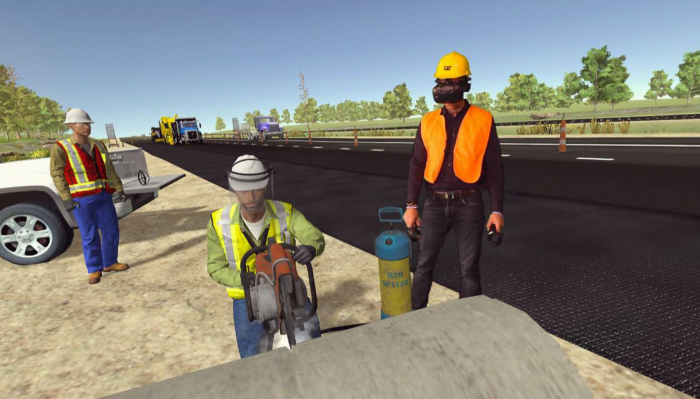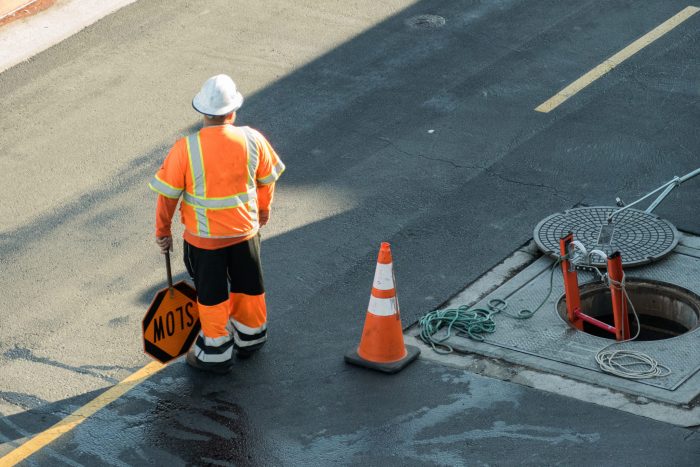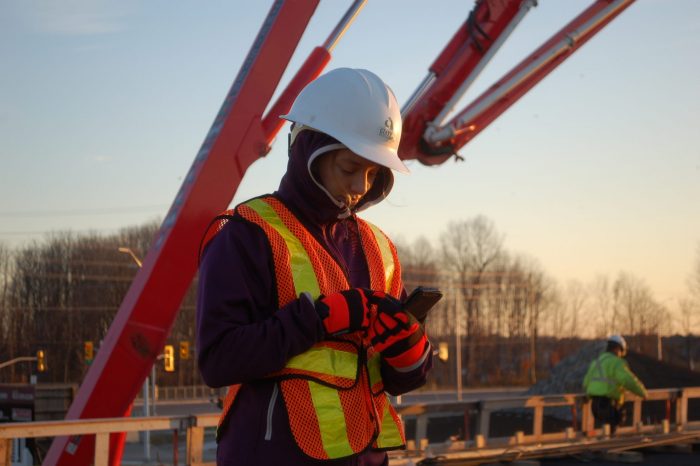Work Zone Safety: Behavioral Analysis with Integration of VR and Hardware in the Loop
Background
According to the Federal Highway Administration (FHWA), work zone fatalities at road construction projects account for up to 3% of all workplace fatalities in a given year. A study of work zone crash data in five states showed that around half of the crashes occur within or adjacent to work activities, putting workers in serious danger. One of the main proactive approaches adopted by construction companies to prevent these incidents is safety training courses, which are designed to help increase awareness of hazards around the job sites. However, work zone safety knowledge from training courses is not enough to change the level of vigilance of workers, which is easily affected by factors such as fatigue or environmental distractions.
Thus, there is a need for an VR integrated hardware in the loop (HIL)-based simulation platform that can be used to study workers’ interactions with roadside units as well as connected vehicles, and their responses to notifications with the purpose of reducing incidents involving workers on urban street and on highways. This enables development and testing of different warning strategies on a physical real-world hardware deployment, thus, helping us analyze the constraints and delays associated with the warnings and messages exchanged with such physical hardware. This project aims to understand the key parameters that play a role in achieving responsive behaviors in workers. Through wearable sensors and representations of traffic loads from real data acquired from hardware in the loop systems and work zones in virtual reality, data on workers’ behavioral and physiological responses to warnings issued under various realistic scenarios and varying warning mechanisms will be studied.


Research Objectives
This project aims to enhance the VR environment including the hardware in the loop component to simulate the traffic loads and data using real data streaming from HIL. Specifically:
- Understand the challenges in integrating the messages and warnings generated from real hardware (sensors, RSUs) transmitted to the simulated VR environment using a HIL-interface, the design of such interface is part of our objectives.
- Define the key factors that influence the reaction of workers in and around work zones to warning notifications received from the installed sensors along those from the virtual environment.
- Evaluate the effectiveness of wearable sensors and virtual reality, study the delays associated with warnings from the hardware component and determine the key factors that influence the reactions of workers to notifications.

Deliverables
- Generated simulation scenarios with varying work zone location characteristics and messaging frequency involving real data acquired from HIL data in an immersive virtual environment.
- The evaluation of whether data arriving with different delays/frequency from the sensors and wearables are meaningful to correlate with human responses to notifications.
- A guidance to effectively integrate sensors on-board vehicles and RSUs with wearables to work practices at job sites and define a sequence of steps to follow to analyze the collected data.
- A mobile application that can collect worker choices (dismiss or react to a notification) along with their bodily responses (heart rate)
- A report describing the key factors that determine human (worker) responsive behaviors in highway work zones.
Final Report

Project Details
| Principal Investigator | Semiha Ergan |
| Co-Principal Investigator | Junaid Khan |
| Funding Source | Request from C2SMART: $60,453 50% cost share from NYU Department of Civil and Urban Engineering: $50,033 |
| Total Project Cost | $110,486 |
| USDOT Award # | 69A3551747124 |
| 3/1/2020 – 2/28/2021 | |
| Implementation of Research Outcomes | The outcome of this research will help to calibrate when, at what frequency, and how to (with what modalities) share warnings from simulated virtual environments as well as real vehicles and sensors with workers involved in active work zones for effective responses towards reduction of incidents. |
| Impacts/Benefits of Implementation | The proposed research can potentially help mitigate highway work zone incidents (i.e., injuries, fatalities, and near misses), in particular, leveraging the hardware in the loop component, we can determine when, how and at what frequency to push alarms/warnings/notifications to workers at work zones. The proposed VR based hazard simulation can serve as a safe way to capture worker response under hazardous conditions without putting them in danger, while capturing realistic representation of real-world work zones from the integrated hardware (i.e., sensors and vehicles). |







